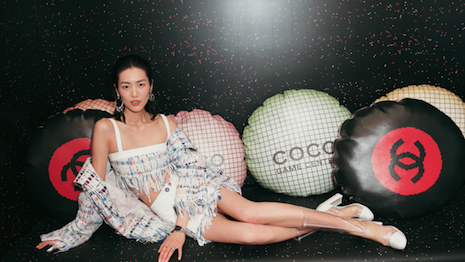- About
- Subscribe Now
- New York,
October 1, 2018

 Chinese travelers are spend the most of any group and are growing in numbers. Image credit: Marriott
Chinese travelers are spend the most of any group and are growing in numbers. Image credit: Marriott
NEW YORK – As Chinese consumers now account for 32 percent of spend on luxury goods worldwide, even luxury retailers in the United States need to focus on catering to them by understanding the culture and adopting mobile trends.
Speaking at the Luxury Marketing Forum, the CEO of Attract China detailed the importance of catering to affluent Chinese travelers, explaining China will be the top source of visitors in North America by the year 2020. These travelers spend an average of $7,200 per individual, likely reaching a total of $61.5 billion by 2020.
"Now is the time for luxury brands from the majors to individual boutiques to learn and engage with Chinese consumers," said David Becker, CEO of Attract China. "A projected 6.3 million Chinese will visit the U.S. in 2021.
"And yet many luxury brands desperate for retail foot traffic are still dipping their toe into this extraordinary market," he said. "Part of the challenge is that many brands don’t have Chinese market expertise, which requires a blend of cultural awareness, technology innovation and consistent engagement.
"While brands likes Chanel, Gucci and Michael Kors are already well established in China, there are thousands more that have an once-in-a-lifetime opportunity to introduce their brand to Chinese starting with a visit to the U.S."
Luxury Daily organized Luxury Marketing Forum, with venue sponsor UBS
The Chinese traveler
There has been a 52 percent increase in United States 10-year visas, with an expectation of outbound tourism to the U.S. reaching 6.3 million by 2021, according to research by Brand USA, the National Travel and Tourism Office and the Chinese Travel Bureau.
Chinese travelers look to shopping the U.S. mostly due to item authenticity, with 40 percent citing this factor as the top reason. This is followed by lower cost at 27 percent, more variety and inventory at 21 percent and store experience at 12 percent.
 Chinese supermodel Liu Wen at Chanel's recent pop-up store. Chanel is one of the most well-regarded luxury brands in China. Image credit: Liuwen/instagram
Chinese supermodel Liu Wen at Chanel's recent pop-up store. Chanel is one of the most well-regarded luxury brands in China. Image credit: Liuwen/instagram
These travelers are mostly buying apparel, footwear and accessories while traveling overseas, closely followed by personal care and fragrances.
One of the most important aspects of attracting these consumers is integrating mobile payment options frequently used overseas such as WeChat and Alipay. These two payment options were cited as the preferred source by 55 percent of Chinese travelers.
These options help tremendously with the language barrier, allow buyers not to be restrained only by the cash they have on them and ease embarrassment for those who do not understand overseas payment experiences.
Luxury buyers from Mainland China start younger compared to other cultures, beginning at 35 years old and buy more frequently. These consumers purchase luxury goods about eight times a year and 249 million will purchase products through cross-border ecommerce, known as “haitao.”
Mr. Becker believes that overcoming the language barrier by integrating Mandarin-speaking associates into stores as well as these mobile payment options can dramatically impact U.S. retailers' success with Chinese travelers. Associates can also use live bilingual translation applications such as Jeenie.
 Alipay makes it easier to pay through mobile devices. Image credit: Alipay
Alipay makes it easier to pay through mobile devices. Image credit: Alipay
Brands and retailers need to reach these consumers even before they leave for their trips, by engaging with them on popular platforms such as WeChat and Weibo, as well as while they are at their destination.
Offering helpful solutions such as a local map or travel guide in Mandarin and small in-store gifts and Champagne can help these travelers feel at home.
Additional insight
Chinese millennials' evolving travel priorities are influencing the way older generations look at leisure trips, as Chinese tourists are spending more money and visiting farther destinations than in the past.
Hotels.com's "2018 Chinese International Travel Monitor" report finds that Chinese tourists of all ages are looking for more authentic travel experiences. This is impacting when, where and how they travel (see story).
The United States is becoming a highly coveted travel destination among affluent Chinese consumers, and due to their spending habits the demographic has proven extremely influential, according to a report from YouGov.
Chinese affluent look to purchase luxury goods while traveling abroad, and Chinese consumers spend the most out of any group while traveling. YouGov's Affluent Perspective 2017: Chinese Luxury Shoppers in America finds that 56 percent of Chinese affluent are planning a trip to the U.S. within the next two years (see story).
"According to Destination Analysts, the U.S. is the most desired international destination for Chinese travelers and New York is the hottest city on their U.S. list," Mr. Becker said. "Working with a trusted partner like Attract China, brands can tell their story through ongoing campaigns that combine digital, social and print.
"But once they’re in front of your store, how do you lure them inside?" he said. "We suggest making your brand and retail environment China friendly by making providing WeChat Pay and Alipay for mobile payments, bilingual translation services like the Jeenie translation app to facilitate communication and create special events that combine art and commerce like Madison Avenue’s Golden Week promotion with Marie Claire."
Share your thoughts. Click here